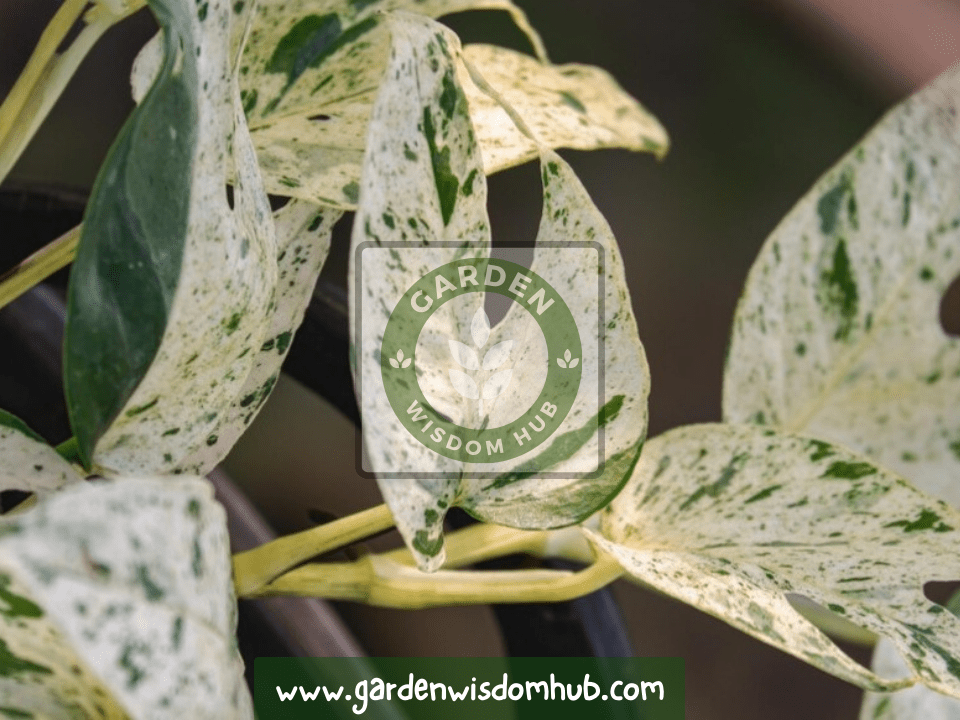Snake Plant Problems and Disadvantages:
The Bad Side of Snake Plants Snake plants (Sansevieria trifasciata) are popular because they filter the air and require little care. However, there are some annoying concerns and negatives to consider. Let’s explore snake plant care and pampering like pros.
Harmful Toxins for Humans and Pets: Snake Plant Problems and Disadvantages:
Snake plants have a secret. They produce saponin, a poison that can harm humans and dogs that bite. Saponin is the plant’s defence against pests and fungi. It’s natural and repels pests well. Saponin may cause stomach upset if eaten.
Maybe leave saponin for the plants and use something stomach-friendly. Beware of those cunning furballs. They may feel uneasy, causing nausea, vomiting, and drooling. It seems cats are especially prone to this funny discomfort. Watch out for your pets and be ready to help if they get sick! If you don’t want your kids or pets to chew the plant, keep it away from them. Snake Plant Problems and Disadvantages can be really disturbing sometimes:
Snake Plants Grow Slow:
These green friends move like snails. Grab a chair and watch the grass grow while your snake plant grows. My buddy, patience is key to this slow growth.
Don’t even mention snake plants’ snail-like development! These guys can grow to 6–7 feet, but they grow slowly, especially indoors. Like watching paint dry, but with plants. For individuals who want their indoor garden to expand quickly, this gradual growth might be frustrating. Trimming leaves or tips may further hinder growth.
Snake Plants Don’t Flower Regularly:
Snake Plants are notoriously erratic bloomers. Snake plant leaves always steal the show. They’re not party animals when it comes to blossoming. It depends on the plant’s species and habitat whether it blooms. This is like their own floral fashion show.
You have overachievers that blossom every year. Also, lazy plants that don’t want to bloom. They are a botanical diva! It’s disappointing if you wanted gorgeous blooms.
Sheds Leaves:
If sick, drop its foliage. Snake plants uniquely communicate their discontent.
When sick, they may drop some leaves. Do you suppose it’s their dramatic exit? Imagine this: your plant, keeping its straight, solid leaves looking good. Then tragedy hits.
Overwatering the Snake Plant:
Overwatered, underlit, and in a little pot. It does what? It sheds leaves like a plant horror movie audition. Poor thing. Snake plants’ ill leaves become white and fall off abruptly. Like auditioning for a plant horror film!
Snake Plant Drowning Warning
Don’t overwater snake plants—they drown! These plants require little irrigation. Be careful not to drown them; they may throw a tantrum and curl their leaves! Make sure to only water your plant when the topsoil is dry to avoid accidents. Beware of pests that prefer to nest when you water too much. People, watch out.
The Snake Plant wants to rule the world! This plant’s secretive tendrils and motions should not be overlooked. It spreads greenery like a sponge. You may soon live in a Snake Plant jungle if you’re not careful. Stay alert.
Propagation of the Snake Plant:
Snake plant propagation is exciting! Water propagation has fans, but it may get wet. Not everyone has a green thumb, but some have unusual plant-care methods. Sometimes, improper methods hurt poor plants more than they help. Who knew snake plant care was so delicate? Refresh your propagation skills to avoid plant catastrophes!
Snake Plants Tend to Curl Their Leaves:
Snake plant leaves curl oddly. Like they’re doing their yoga! Don’t panic if a snake plant has curled leaves—it’s only stretching. When snake plant leaves twist, it’s usually due to too much water, uninvited visitors, or a tough period.
Imagine going about your business growing gorgeous plants when thrips appear. They do what? After eating your delicate leaves, they curl up like they’re hiding from the thrips feast.
It’s like a green hide-and-seek with less fun and more frustration. If you want your plant to thrive, correct these issues immediately.
Temperature Requirements:
Temperature Needs Snake plants are cool. They can endure a wide range, but 55–85 degrees Fahrenheit is their favourite zone. They’re like plant Goldilocks, continuously seeking the “just right” temperature.
This unfortunate plant will melt down if temperatures become too high or low. It may resemble a dried raisin or a miniature bonsai tree. Keep everything in the Goldilocks zone, shall we?
Is It Bad to Keep a Snake Plant at Home?
Snake plants are cool houseplants despite their oddities. They clean the air and are easy to maintain. Win-win! Beware if you have pets or children—this substance is hazardous.
Snake Plant Problems and Disadvantages Indoors:
Snakes everywhere! Not really; however, snake plants can cause indoor problems. Let’s discuss the drawbacks of having these slithery green companions at home. Snake plants flourish indoors, but they have particular challenges. You have a plant, right? It says, “I wanna grow big and strong!” However, “Oh no, there’s not enough space for my roots to spread out!” After that, things calm down.
Poor plant, striving to reach the stars with its roots. Indoor lighting can be inadequate, which is bad for our leafy buddies. Indoor air might be steady but dry as a desert. That air can wreck your vegetation. Its variable humidity causes leaf curling and browning tips like a terrible stand-up comedian. What a tough bunch!
What Are the Side Effects of Snake Plants?
Watch out for stealthy snake plants! The snack may not be good for people or animals. These small critters contain saponin toxin, which can upset your stomach! Don’t even mention the effects on our pets. Not pretty. When sap contacts sensitive skin, it may cause inflammation.
Is It Bad to Keep a Snake Plant at Home?
Keeping a snake plant at home isn’t bad. Not only do they improve indoor air quality, but they also require little maintenance. Talk about low-maintenance heroes! However, if you have pets or children, you may want to prevent them from eating the toxic parts. Let your plant experience the high life. In a plant VIP lounge, it’s out of reach. Thus, you can prevent accidents.
What Is the Myth About Snake Plants?
What’s with snake plants? Do they secretly plan to steal our homes? Do they secretly want to rule the plant kingdom? Let me shatter the myth about these stealthy serpentine plants once and for all! Some people believe snake plants bring bad luck, which is amusing. Come on! These harmless plants clear the air and provide greenery.
Consider them lucky charms! Feel free to blame your woes on a harmless plant. Don’t be surprised if the snake plant laughs. It’s funny how some people associate bad energy with these plants’ pointed, erect leaves. In feng shui, snake plants are lucky charms that protect and offer good luck. They’re like miniature bodyguards stationed to deflect negative energy.
Why Are My Snake Plant Leaves Falling Over?
I think your snake plant leaves are napping and tumbling over! No worries—they’re simply yoga-practicing. The secret plan is to become the most flexible plant in the world. Relax and watch your snake plant resist gravity! Your snake plant’s leaves fell, huh? There could be several reasons for this leafy rebellion:
Overwatering:
The basic mistake of overwatering plants. Like giving them a constant rainstorm without the attractive rain boots. Not surprisingly, their roots are rotting, and their leaves are drooping like a balloon. Stop the waterworks and let the plants breathe!
Underwatered plants:
Do you think you can just spray your plants and call it a day? Think again! Your leafy pals will droop like sad puppy without adequate water. Avoid underwatering those plants unless you want leafy drama queens!
The Lighting Faux Pas: Lighting:
Who knew it could be so dramatic? Light-hungry plants can be troublemakers. Too little, and they’ll drop leaves like they’re working. They’ll wilt faster than forgotten flowers if overdone. Getting the right balance is key!
Posts:
What fun it is to deal with pests like thrips! These miscreants prefer to eat leaves, making them frail and ready to fall. The leaf-eating intruders are a constant threat. Plant diet preferences can lead to nutrient deficiency.
Absence of vitamins and minerals in the soil:
It can hinder plant growth, and cause leaves to drop like it’s hot. Not cool soil. Snake Plant Problems and Disadvantages can be aggravated due to bad soil. Like a botanical bodybuilder, you can keep your snake plant robust by addressing these challenges.
- Watch this Video For More Guide Related to: 5 Common Snake plant problems
Conclusion: Snake Plant Problems and Disadvantages:
In conclusion, Snake plants are indoor gardening superheroes. They’re so easy to care for, and they could probably care for themselves. They also cleanse the air amazingly. Talk about multitasking! These plants also have drawbacks. Sluggish growth, toxicity, and overwatering are issues. By understanding these challenges and finding creative solutions, you can enjoy snake plants without drawbacks.
Do not forget to check out other articles on the following topics for detailed guidance.
Similarly, check out these fancy guides for proper garden management.
Varieties of Tall Succulents and Cacti
Varieties of Fast Growing Indoor Plants
Why Are My Rubber Tree Leaves Curling
How much water do sunflowers need
How Often to Water a Snake Plant
Why is My Snake Plant Turning Yellow?
James Porter
Welcome to our haven of gardening and plant care, where outdoor and indoor planting enthusiasts come together! At Gardening Wisdom Hub, we aim to provide you with the most authentic information on anything related to gardening, plant care, seasonal planting etc.
The author of our website is James Porter, an experienced industry veteran. He has a deep interest in everything green. James’s enthusiasm for exploring plants’ features and learning new gardening methods began at a young age. Gradually, his passion increased with time, leading him to become a highly esteemed professional. His extensive knowledge makes him a priceless resource for inexperienced and seasoned gardeners.

